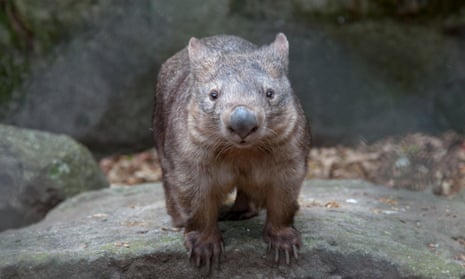An Australian woman who was reportedly attacked by a wombat while walking her dogs says she thought she was going to die at the paws of the aggressive marsupial.
Kerry Evans, from Canberra, told Fairfax Media she was walking her springer spaniels Murphy and Pirate down a suburban street last week when she encountered the wombat, which was grazing in a front garden.
Evans said the wombat charged her dogs who panicked and knocked her to the ground, within reach of the wombat’s claws.
“I was laying screaming for help, I couldn’t get away from it, every time I managed to get up it attacked me and bit me and knocked me to the ground,” she told the Canberra Times.
“I really thought I was going to lay there and die that night because I just couldn’t see how I was going to get away from it, it just wasn’t stopping its attack.”
She was rescued by a neighbour and a nearby driver, who took control of her dogs and allowed her to scramble away.
Evans received more than 20 bites and lacerations from the wombat’s attack, three of which required stitches.
A spokeswoman from the Australian Capital Territory’s parks and conservation service said it was the first reported wombat attack in the Australian capital.
“The ACT government does not regularly warn the community about wombats as this was a rare occurrence,” she said.
Wombat attacks on humans are rare but not unheard of. In 2010 a 60-year-old man spent the night in hospital after being “mauled” by a wombat he encountered while attending to a call of nature outside his caravan.
According to a report from the time, the man, Bruce Kringle, said he was unable to escape the animal and eventually lay on it until his neighbour came to his aid. The neighbour then killed the wombat with a blow to the back of the head with an axe.
Authorities suggested the wombat may have mange, a skin condition that causes blindness and can make wombats more scared and defensive, but one of Kringle’s other neighbours dismissed that claim, saying: “It looked quite healthy apart from the fact it was dead.”
James Woodford, a contributing writer to Guardian Australia who wrote a book titled The Secret Life of Wombats, said the animals “knock you over like a skittle.”
“They’re really only good around people while they’re babies,” Woodford said. “The image of the cute and cuddly wombat is a load of hogwash.”
Adult wombats are known to be aggressive, particularly if they feel threatened. A favourite technique, according to the Australian Museum, is to flee to a nearby burrow and then use their sizeable rump to crush the pursuing predator’s head against the dirt roof.
Their bites are usually not severe but can cause a serious infection if untreated.
Martin Lind, from the ACT’s wildlife service, said the animals were deceptively fast “little bulldozers” and not as cute and cuddly as commonly portrayed.
“As babies, they’re clingy, they’re adorable, they’re with mum 24 hours a day, they’re in a soft, snuggly sleeping bag all the time listening to a heart beat,” Lind told The Canberra Times.
“When they start to mature and hit puberty, they just hate everybody and everything. They go from running between your legs and cute as a button to being absolute little – can I swear? – little shits. They nip you, they wreck, they bite. I won’t look after wombats because you kiss goodbye to your flooring and everything. They just destroy everything.”
Lind suggested wild wombats be given a wide berth.

Comments (…)
Sign in or create your Guardian account to join the discussion